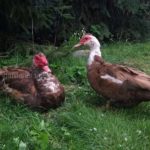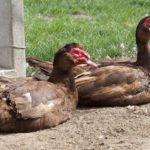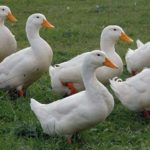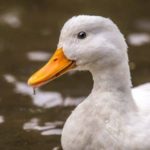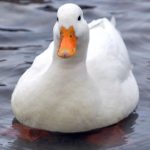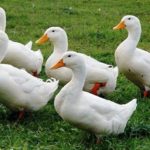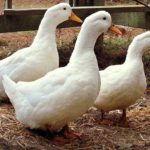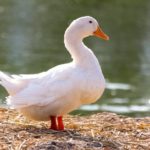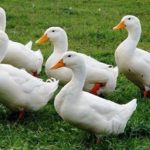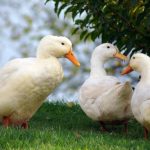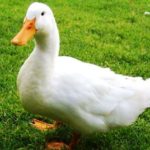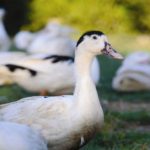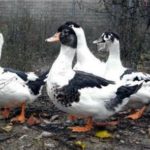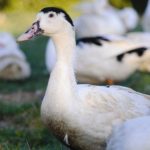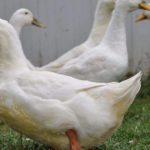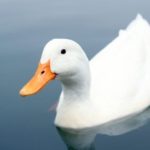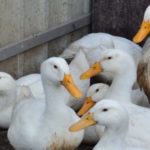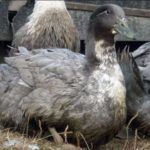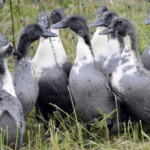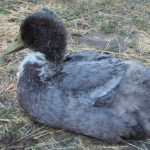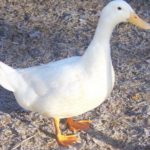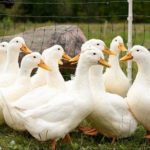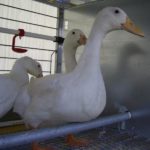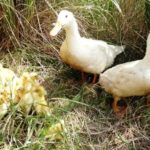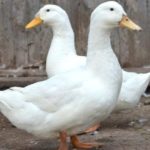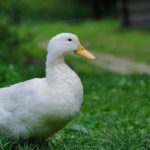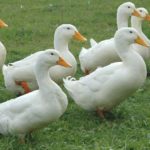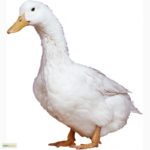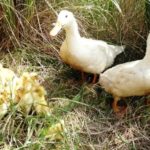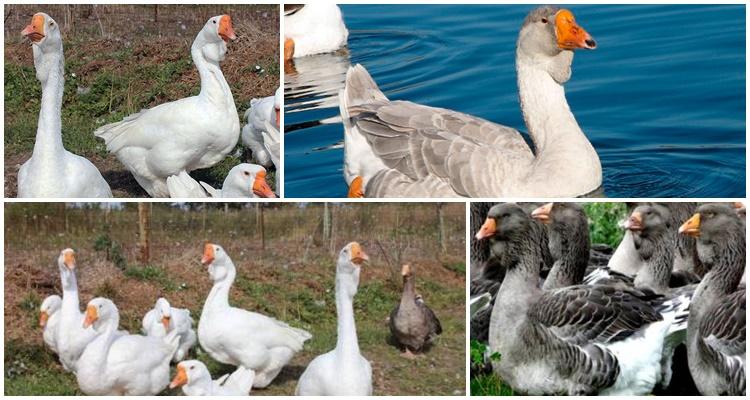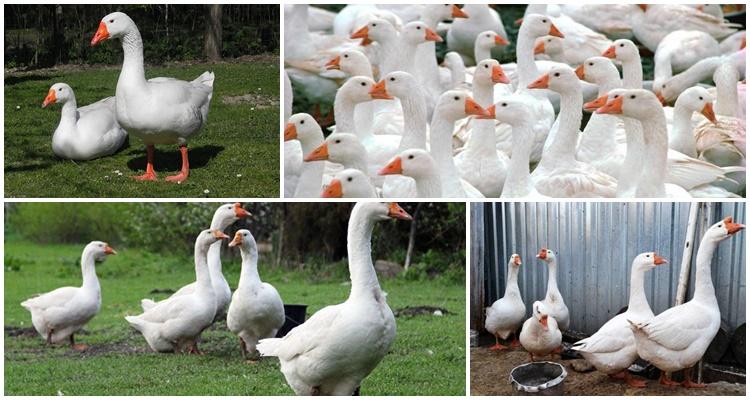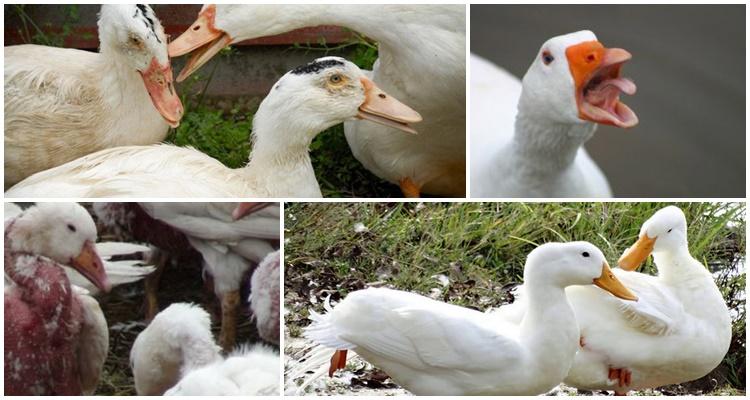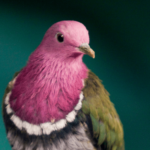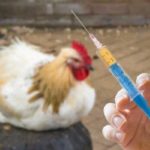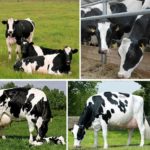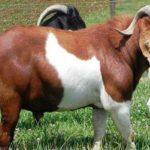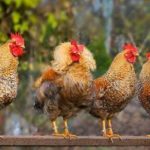Raising broiler ducks is becoming increasingly popular, which is associated with the high productivity and profitability of this branch of poultry farming. These birds, bred as a result of careful selection, quickly reach slaughter maturity and do not require complex care. Representatives of most broiler breeds are fertile, their meat is tender and juicy, suitable for preparing restaurant dishes.
Features and description of broiler ducks
All existing breeds of broiler ducks are hybrids. Their ancestors are the Indian duck and the Peking duck. Both parent breeds have disadvantages: Peking ducks have too fatty meat, noisy behavior and a tendency to gluttony; Indo ducks have low adaptability to temperature conditions, and the meat tastes like wild meat, which not all gourmets like. Breeders managed to minimize the above-mentioned disadvantages in hybrids.
The weight of broiler ducks grows quickly; in a short time, the duckling turns into an adult, looks large and well-fed. Many farmers manage to raise 2 or 3 offspring per season.
Broiler ducklings are killed before 7 months of age, before the molting period. At this age, feathers change from chick feathers to hard ones, which negatively affects the quality of meat products. And the appetite of teenage broilers increases; their further maintenance simply becomes unprofitable.
Bird species
Many breeds of broiler ducks have been developed, differing in external features, egg and meat productivity, and resistance to external factors. A suitable breed should be selected based on financial resources, care and maintenance capabilities.
Musk American
The main external characteristic of the breed is the red skin around the eyelids and above the beak. The male's head is decorated with red, knobby growths. Muscovy ducks are characterized by a loud hissing rather than a quack.
An adult broiler drake reaches a weight of 6 kg, a female - 3.5-4 kg. The meat is lean and tastes like game, which is due to the secretion of musky fluid by the glands. Ducks lay eggs from spring to late summer; one individual produces up to 120 eggs per season. The egg is white, weighs 70 g.To keep a musk broiler, you will have to build a shed with insulation.
White Pekingese
Peking ducks have a massive build, a large head on a short neck. The beak is flattened and orange. The limbs are short with wide membranes. The feather covering is dense.
With high-quality feeding with the predominant inclusion of proteins, the female individual grows up to 3 kg in 60-75 days. The male can reach 5 kg. Females begin to lay eggs at 150-155 days of life. The egg weighs 90 g. During the season, the bird produces about 120 eggs.
Agidel
The broiler breed was bred in Bashkortostan in the early 2000s based on hybrids: Blagovarian ducks, Indian runners and super-M. In 60 days the bird reaches 3 kg.
Cherry Valley
The most popular broiler duck breed in the world was bred by the British.The ancestor is a duck crossed with a white Peking broiler. Visually cherry valley ducks They are similar to their Beijing relatives, they have a wide chest, a large head, short legs with a thick skeleton, and white plumage.
Young animals reach maturity by six months; a female that is productive in terms of egg production can be left for up to 3 years. With a high-quality diet, 50 days are enough for a young individual to gain 3.5 kg. In a year, about 150 eggs are obtained from one duck, each of which weighs 80-90 g.
Mulard
The French breed was created in the 1960s based on Peking and Muscovy ducks. Slaughter weight by 2 months of age reaches 3.5-4 kg. The meat of ducks of this breed is not fatty even with high-calorie feeding.
Star-53
The French meat breed is divided into 2 types: medium growth rate (by 55 days they eat 4 kg) and high growth rate (up to 4.5 kg, with 30% of the meat being breast meat). From ducks, regardless of type, up to 280 eggs per season are obtained.
Ducks are usually raised in a free-form manner, and dim lighting is maintained in the poultry house.
Favorite
Also, this breed of broiler ducks, randomly bred by specialists from Bashkortostan, is called Pharaoh. Characteristics of the breed: created as an intermediate version of the selection of the Beijing variety, slaughter weight is 2.5 kg in 2 months, if greater productivity is desired, the ducks are raised for another month, resulting in 3.5 kg.
Pace
A young broiler hybrid with white dense plumage was obtained from X-11 ducks bred from Cherry Valley. The slaughter weight of drakes by 50-55 days reaches 3 kg, females - 2.5 kg, after reaching this age, 3 times more feed is consumed for every kilogram of weight of ducks left alive. Egg laying begins at the age of six months; up to 150 eggs are produced per year from an individual.
Medeo
The Russian broiler breed was created on the basis of Cherry Valley and does not lag behind it in terms of productivity. In 2 months the weight of the ducks reaches 3.5 kg. The female produces about 150 eggs per year. Each egg weighs 80-90 g.The survival rate of chicks is 70%.
Orvia
The French broiler breed comes from a hybrid star-53. After 55 days, the bird reaches 4 kg with moderate feeding. One female produces up to 250 eggs per year.
Positive and negative sides
Broiler farming is a cost-effective poultry farming, the popularity of which is growing from year to year.
Place for maintenance and care
The room for ducks must be dry, spacious, ventilated, and disinfected. Daylight hours should last 10 hours. The optimal temperature is 22-24 °C, air humidity is 65-70%.Overheating and hypothermia lead to weakened immunity. Raising at home requires plenty of space for each bird. When relocating, broilers do not gain weight well. At 1 m2 fits 15 month old ducklings and 6-8 adults.
The bedding is made from straw, hay, sawdust. 12 kg are required per individual for the growing period. The bedding is changed as it becomes dirty to prevent infection of the ducks' feet.
It is advisable to raise broiler ducks with the possibility of walking. A fenced walking area is being built. To care for the birds, feeders and drinking bowls are installed on the site, and an artificial pond is built, which must be cleaned regularly.
What do broilers feed?
Private poultry farmers prefer to feed broiler birds with grain and plant foods, while large farmers prefer to feed them with compound feed. Feeding usually continues until 2-3 months, by which time the young individual weighs enough for slaughter.
In the first week, ducklings are given a boiled egg, cottage cheese, millet porridge, and chopped herbs. Beans and grains are gradually introduced into the diet. At 3 weeks, broiler ducklings eat barley, wheat, corn grain, and greens. In the first days of life, broilers grow on protein food (20% of the diet), closer to slaughter the amount decreases to 10%.
Proper diet for broiler ducks:
- grain, bran – 45%;
- greens – 40%;
- beans – 10%;
- shell rock, chalk – 2%;
- garden additives (zucchini, pumpkin) – 2%;
- fish oil – 1%.
Birds grazing near a pond willingly eat duckweed.
When grown on compound feed for up to 3 weeks, starting and then finishing nutrition is used. Recommended daily servings:
- 1st week – 95 g;
- 2nd – 105;
- 3rd – 155;
- 4th – 205;
- 5th – 215;
- 6th – 250;
- 7th – 255;
- 8th – 260.
Nuances of breeding
Only purebred ducks are bred.When breeding 2nd generation individuals, ducklings with blurred breed qualities appear. For breeding, a group of 4 females and 1 drake is created. If the ducks' maternal instinct has not atrophied, then a secluded place with a nest is prepared for incubation. You can take a wooden box. It is enough to place the egg on the ground. The female herself drags straw and blades of grass into the nest and sits on the eggs until all the ducklings peck.
If the female refuses motherhood, she will have to use an incubator. Eggs are rejected by candling, disinfected, placed in an incubator, kept at a temperature of 37.8 °C, humidity 60-70%.
What diseases are they susceptible to?
Broilers are susceptible to infection and unfavorable external factors; they often develop diseases:
- conjunctivitis and ulceration of the mucous membranes due to retinol hypovitaminosis;
- convulsions, bradycardia due to tocopherol hypovitaminosis;
- colds, viral infections;
- intestinal infections;
- level disease due to mineral deficiency (birds begin to eat inedible objects);
- cuticculitis is a deficiency of retinol and B vitamins, accompanied by diarrhea and exhaustion.
Prevention of the listed diseases consists of maintaining cleanliness and order in the poultry house, proper and balanced feeding, good ventilation, and regular disinfection.

